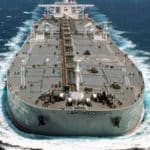Tankers: Mexico’s New Refinery Will Change the Crude and Clean Tanker Trade

The crude and clean tanker market in the North American region will see its trade shift, from 2024 onwards, as a result of the operation of the new Olmeca (former Dos Bocas) 340,000 b/d refinery in Mexico. In its latest weekly report, shipbroker Gibson said that “despite being a major crude exporter and home to significant refining capacity, Mexico has relied for many years on imports to meet its domestic fuel demand. Back in 2018, President Obrador came to power with the promise that he would end Mexico’s import reliance and to do this commissioned the 340,000 b/d Dos Bocas (now called Olmeca) refinery project on the country’s Caribbean coastline. After several cost overruns, which isn’t unusual in refinery projects, the facility is now gearing up to produce refined products and is seeking to move close to capacity by the end of 2023”.
According to Gibson, “the refinery will have two key impacts on the tanker market. For the crude sector, it should reduce exports by around 30% as the plant consumes domestic crude. Exports have been fairly steady around 1 to 1.1 million b/d over the past 5 years in line with flat production and refinery activity. However, with crude runs set to rise by over 300,000 b/d next year, exports will inevitably fall. So far this year, around 70% of Mexican exports have gone to the US, with a similar proportion sailing on Aframaxes. As a result, Maya crude exports from Dos Bocas to the United States could fall to a trickle and total Mexican exports could fall to around 700,000 – 800,000 b/d, exacerbating the tightness of heavy sour grades for complex refineries in the Gulf. Exports on Suezmaxes and Panamaxes will also be impacted, although to a much lesser extent, whilst VLCCs will only marginally be impacted, with very little loading at Dos Bocas in recent years. With the US tighter on sour grades from Mexico, it may have to consume more Latin American or Canadian grades, which could boost tonne mile demand given limited spare pipeline capacity from Canada. However, refiners in the Gulf will also need to compete with their counterparts on the West Coast and Asia for the same barrels”.

Source: Gibson
Meanwhile, “on the clean side, the United States is also likely to feel the brunt of the impact. Currently, the US exports 600,000 b/d of clean products to Mexico, Dos Bocas is slated to produce 290,000 b/d of gasoline and diesel, which could, in theory reduce US/Mexico products trade by around 50%. Whilst the distances involved are not great, the volume loss will be noticed. Furthermore, Mexican imports can often generate extended port delays, which acts as a further support factor for regional tanker trade. Ultimately, US refiners will be forced to either cut runs or find new export markets, depending on the export margins on offer. But, with any alternative export market being further away, longer distances will help offset any loss in volume from a tonne mile perspective”, Gibson said.
The shipbroker added that “on a global scale the refinery is not particularly significant, however, at a regional level it will have a significant impact on crude and product flows. Exactly how these flows will reshape is difficult to predict, with many moving parts in terms of refinery margins, yields, arbitrages, and competition from other suppliers. Whilst the refinery should bring a much needed increase in the efficiency of Mexican fuel supply, it will make US product exports and crude imports less efficient, which could end up being a support factor for the tanker market, if the US can find a home for its lost Mexican exports”, Gibson concluded
Nikos Roussanoglou, Hellenic Shipping News Worldwide

